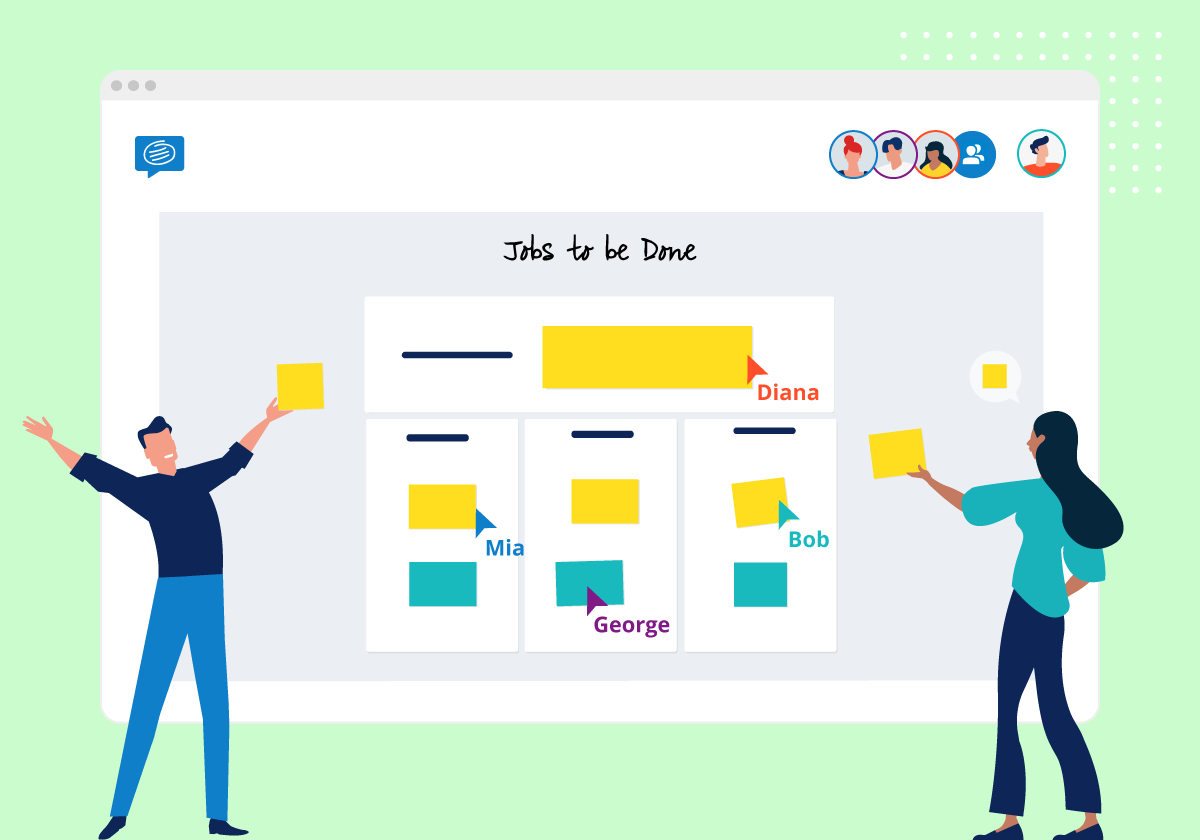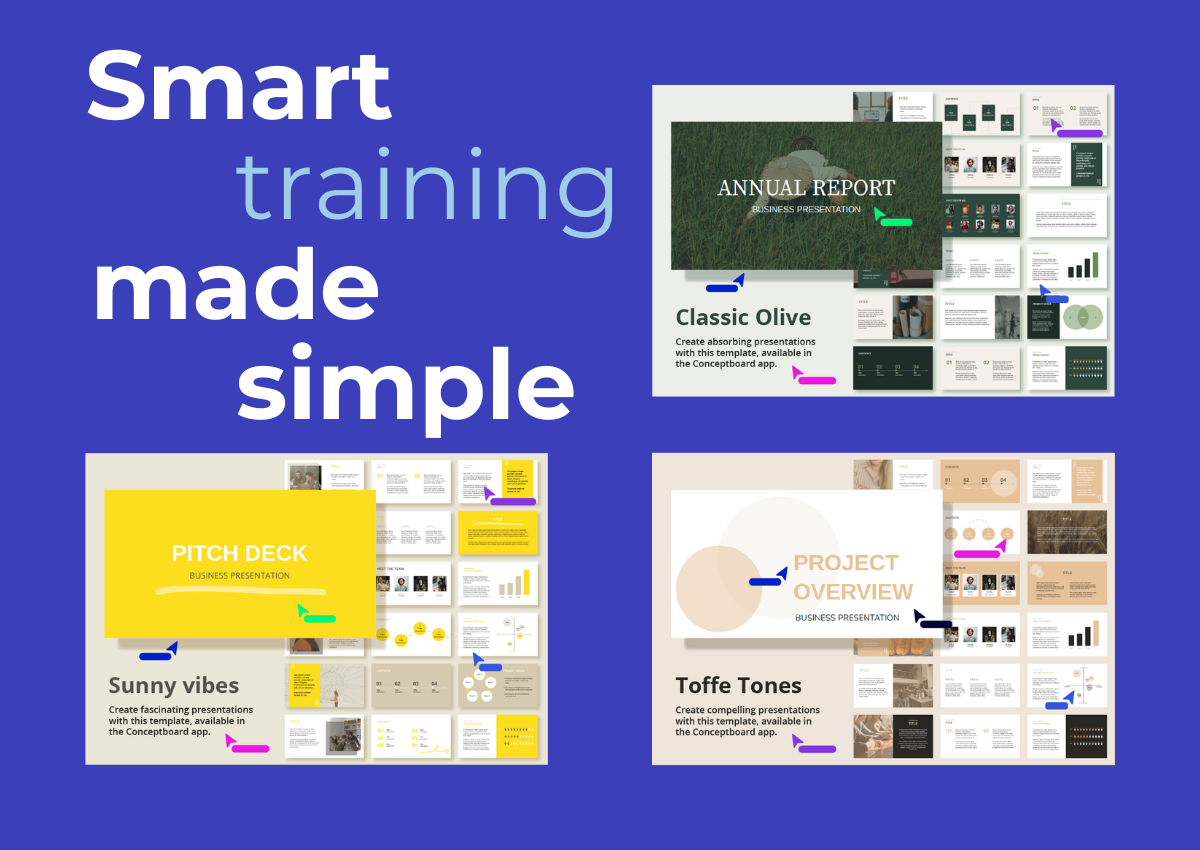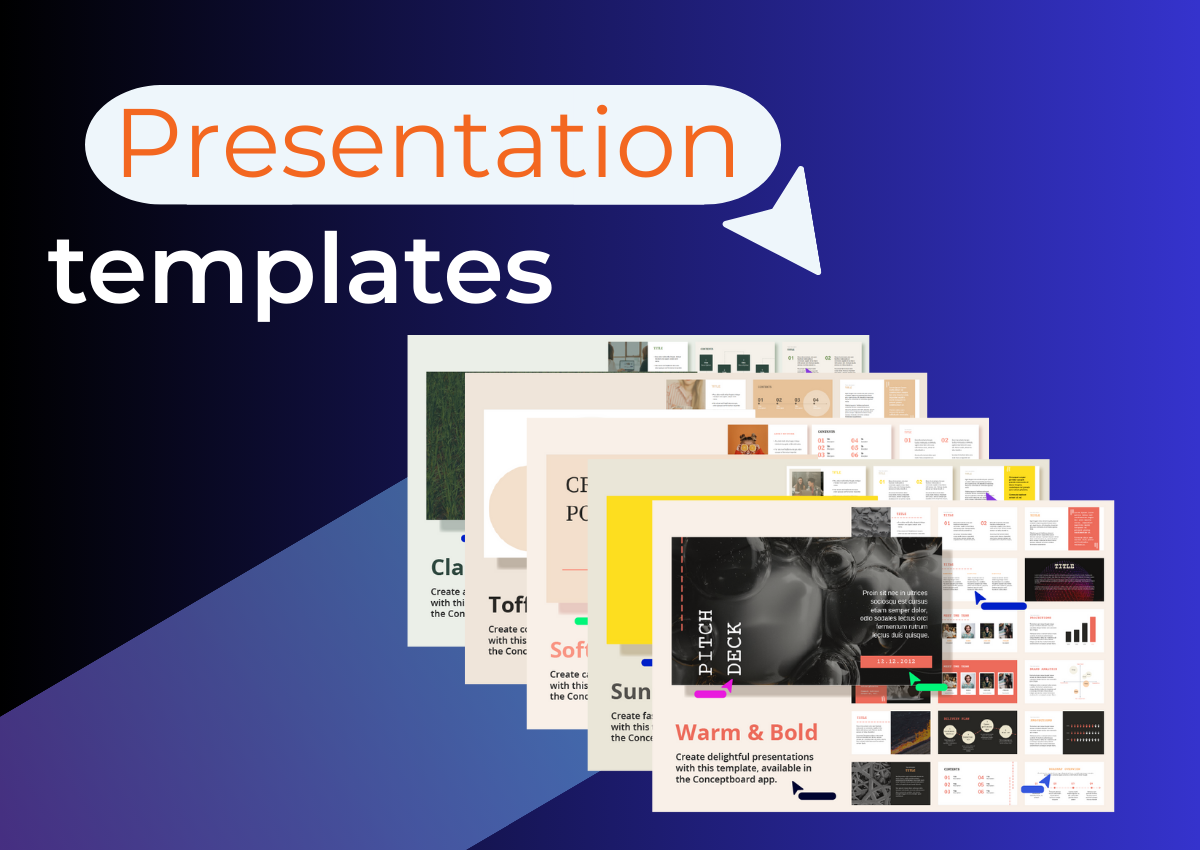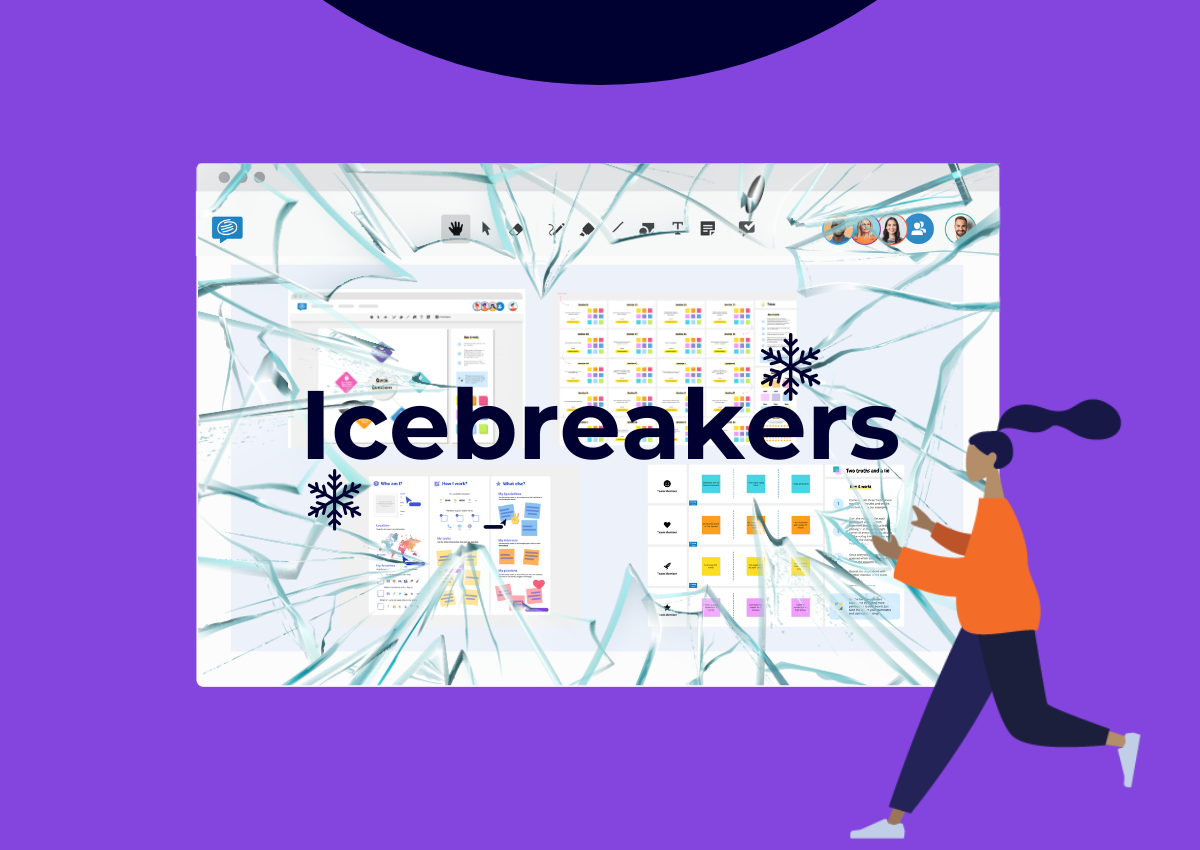This post is also available in: German
Understanding what your customers want is both a science and an art. Unsurprisingly, misaligned customer needs is the biggest reason products fail. And as product teams know, these needs are hard to uncover and agree on.
The Jobs to be done template was designed to help solve this problem. It aligns all departments within the company can help create a shared understanding around which customer needs are unmet.
In this article, we’ll show you just how to define, categorize, capture, and organize all your customers’ needs into the Jobs to be done framework (JTDB for short). This template will help you uncover insights into what causes people to buy a particular product.
Using the Jobs to be done template on Conceptboard can help product development and UX teams drive innovation in two ways:
- To understand what people want in a specific market.
- To create a compelling customer experience.
What is the Jobs to be done template?
The Jobs to Be Done framework (JTBD for short), was first proposed by Clayton Christensen, a professor at Harvard Business School, to help drive innovation. To get into the customer mindset, he asked: What job would consumers want to hire a product to do?
He proposed the use of ‘hire’ instead of ‘buy’, based on the fact that if it works, they’ll keep using it. If it doesn’t, they’ll fire it and look for something better.
The design and product development worlds have since adopted this idea as a way to discovering hidden growth opportunities. So let’s take a look at the various elements of the template.
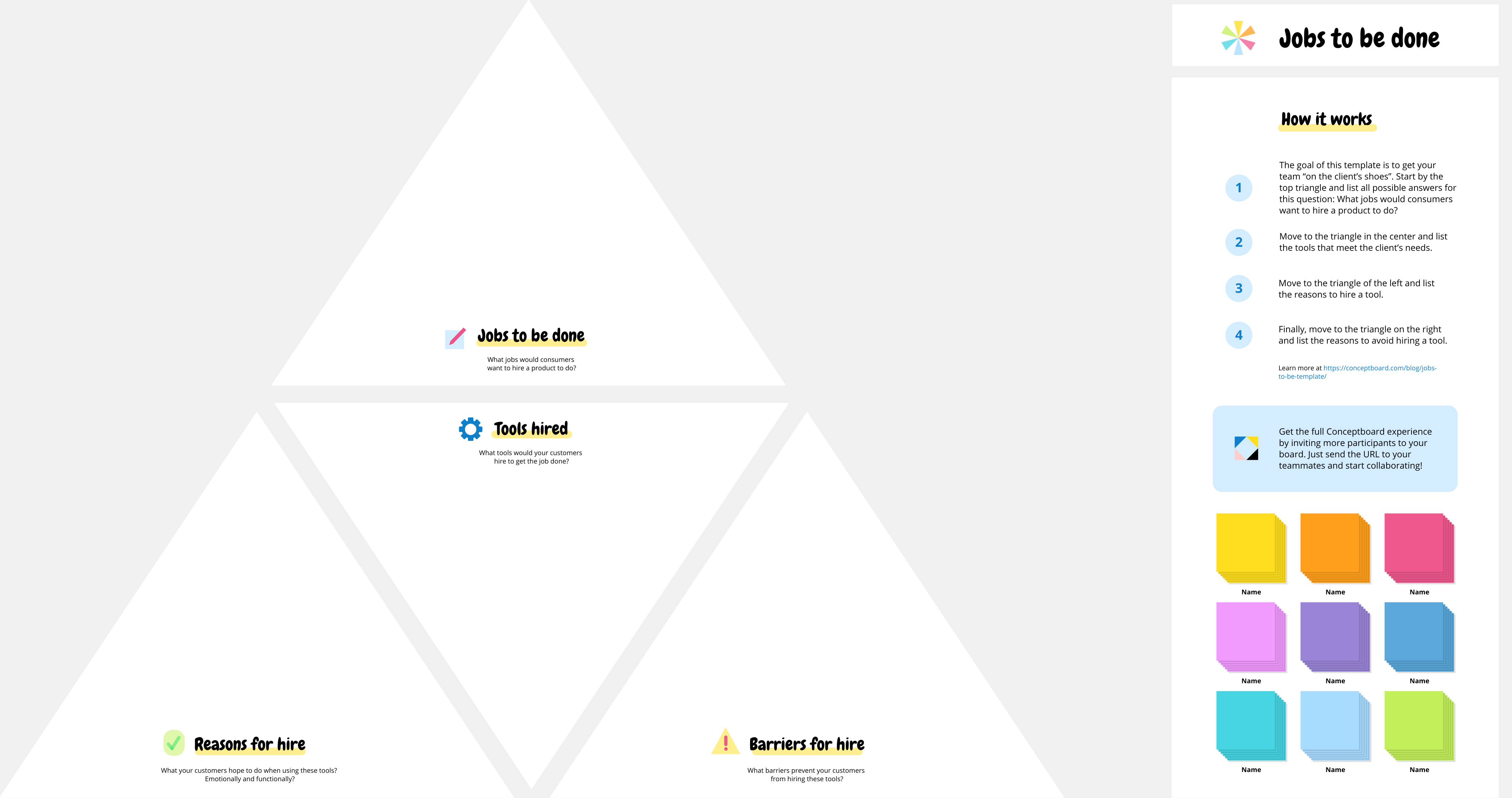
How to use a Jobs to be done template?
Jobs to be done statements
The first step when creating a job to be done statement is analyzing the data from customer interviews. You should look for common patterns – pains and behaviors that they are experiencing that keep appearing in your interviews. The most critical thing to do here is to understand what causes someone to buy something. Based on these insights, you can construct your job to be done statements, consisting of the following three key elements:
- Action verb (an improvement) + object of action (related to the improvement) + context (related to the user)
This structure allows you to identify a situation, a motivation and a desired result.
- Exercise with others without going to a gym (Peloton)
- Eat takeout food without leaving the house (Uber Eats)
Importantly, JTBD always frames customer needs as the “job” they are trying to do. They don’t want a floor cleaning product, they want to have a clean floor. They don’t want an energy drink, they want to stay awake working all night. These openings can help you get into the customer mindset.
- “Help me…”
- “Help me avoid…”
- “I need to…”
Tools hired
It’s also important to work together as a team to think about which tools are currently being hired by the customer, the reasons for the hire, and any existing barriers to hiring.
As a team, come up with a list of tools that they may hire to get the job done and add them as sticky notes into the Tools Hired column.
Eg: online whiteboard, tablet
Reasons for hire
List down the reasons you believe your customers would use these tools.
Eg: seamless collaboration, can think clearly, easy to keep track of things
Barriers for hire
The final column lists the barriers customers face that prevent them from getting the job done.
Eg: clunky and not easy to use, expensive
Once you’ve completed the template, you can start looking at the combination of factors and develop a strategic plan based on customer needs. This will help you develop marketing initiatives, sales strategies and products that really solve your customers’ problems.
Examples of Jobs to be done
McDonald’s
Perhaps the most famous example of the JTBD framework put into motion is Clay Christensen’s milkshake case study.
In it, he talks about how he interviewed McDonald’s customers to understand why they were purchasing milkshakes on their morning commute. He concluded that the milkshake was performing the job of passing the time and being easy to hold during a boring commute. It had nothing to do with taste or brand.
Zoom
Zoom has been hired by millions of office workers to help them stay connected and engaged with colleagues remotely. In this case, the Job to be done is helping teams stay connected and engaged, even when working remotely.
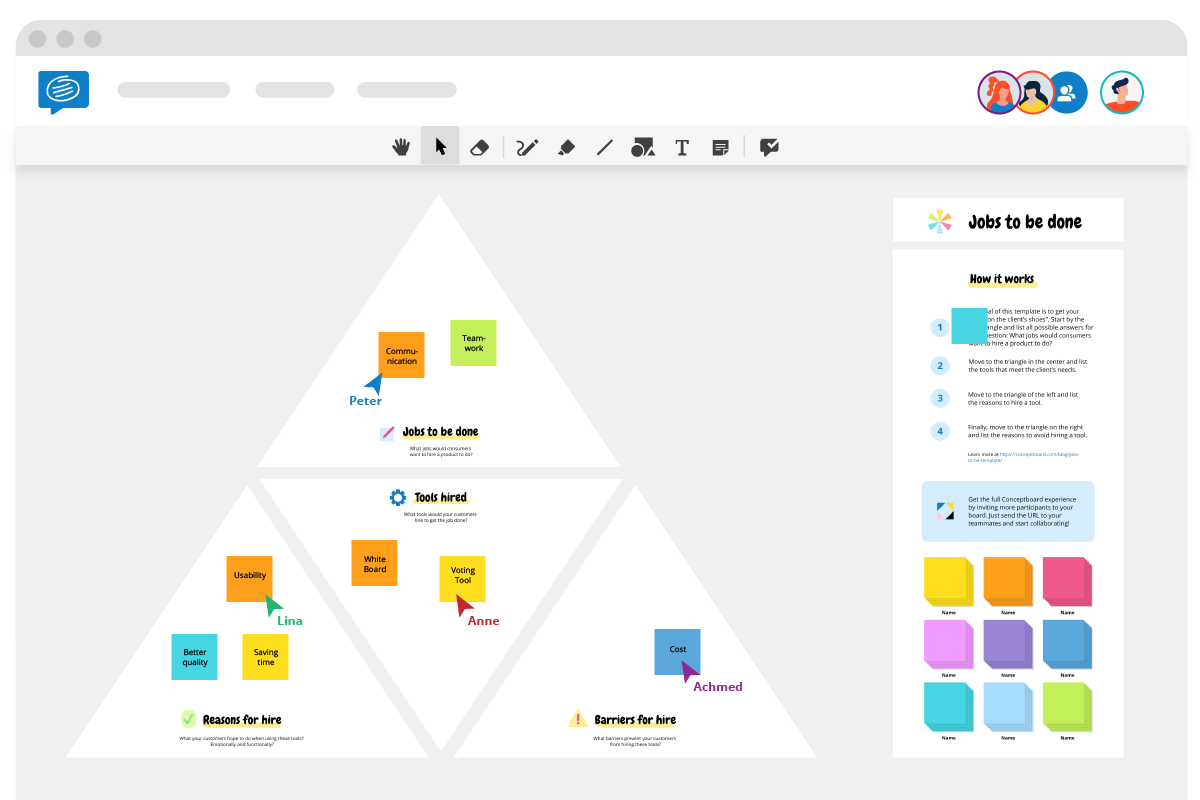
As you can see, the jobs to be done template asserts that customers don’t simply buy a product or service—they “hire” it to do a “job”. Once you understand those jobs your product or service is performing, you will be able to better understand how to market it to the right audience.
Keep up the momentum by exploring further templates to help you improve the customer experience: Customer Empathy Map, Customer Journey Map and 7 more product development templates.

